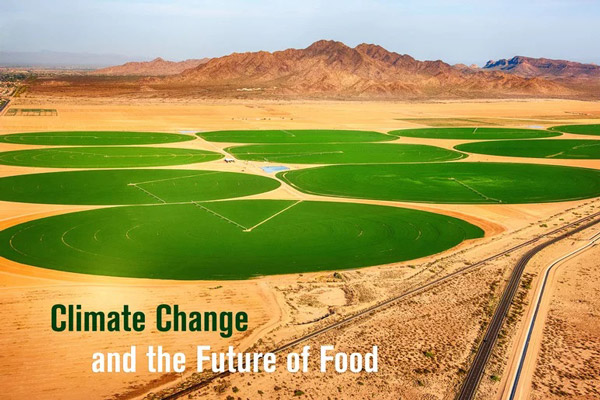

Climate Change and the Future of Food
Over the course of the past few weeks, we have seen the release of some major new reports on climate change—one from the U.S. federal government, and one from the UN. Both included some daunting conclusions: namely, that we are already seeing some of the negative effects of climate change, and that it is having an impact on the whole food system, particularly agriculture.
The report from the Food and Agriculture Organization (FAO) of the United Nations, titled "The State of Agricultural Commodity Markets 2018," highlights the relationship between agricultural trade, climate change and food security. Depending on geography and latitude, by 2050, some harvests are expected to rise and some to fall. "Whereas most tropical regions are likely to experience production losses due to rising temperatures,” the report says, “production in temperate regions is expected to benefit from warmer climate and longer growing seasons." The effects of uneven climate change risk reversing decades of progress in reducing the divide between developed and developing countries, and could disrupt global trade, food consumption and public health.
Meanwhile, according to the U.S. National Climate Assessment report, “Rising temperatures, extreme heat, drought, wildfire on rangelands and heavy downpours are expected to increasingly disrupt agricultural productivity in the U.S. Expect increases in challenges to livestock health, declines in crop yields and quality and changes in extreme events in the United States and abroad.”
This is all, in a word, daunting, and is creating some major challenges for the food and agricultural industries—including food scientists and technologists directly.
The report estimates that climate change could cause the U.S. economy—the world’s largest—to shrink by as much as 10% by 2100, and it is becoming increasingly clear that the food, environmental and economic dynamics are intertwined. As the NCA report reads, “(A)nnual losses in some economic sectors are projected to reach hundreds of billions of dollars by the end of the century—more than the current gross domestic product (GDP) of many U.S. states.”
Illinois, where IFT is based, is a heavily agricultural state with billions of dollars of annual exports. Over the past century, average annual temperatures have risen by 1.2 degrees and rainfall has increased by 10-15%. This has, as you might expect, led many farmers to adjust their farming practices to maintain healthy yields in their crops and their livestock—for instance, soy farmers are planting more cover crops. Others are adjusting the ways that they store their crops to protect them from post-harvest susceptibility to disease. And, of course, many IFT members and colleagues in agricultural and food sciences are working upstream on modern breeding technologies (like gene editing) to develop higher-yielding and more stress-tolerant crops, as well as downstream on reducing waste and food loss. Technologies like cloud-based sensors and artificial intelligence are becoming more prevalent as enablers to integrated solutions. Currently, there is a significant amount of funding going toward research on gene editing and disease prevention. However, if we are going to succeed in tackling these challenges, we’ll need a broader spectrum of integrated approaches ranging from energy, to regenerative agriculture, to food preservation, to more balanced diets, to name just a few.
So, climate change is here, and we are already starting to see the effects on the food industry and the responses from academia and industry professionals. In the years ahead, I anticipate we will see more and more climate-related adjustments from the entire food industry—seed to spoon. The threats that climate change poses are very real, and scientific breakthroughs are going to be mission critical to solving these threats to humanity.
